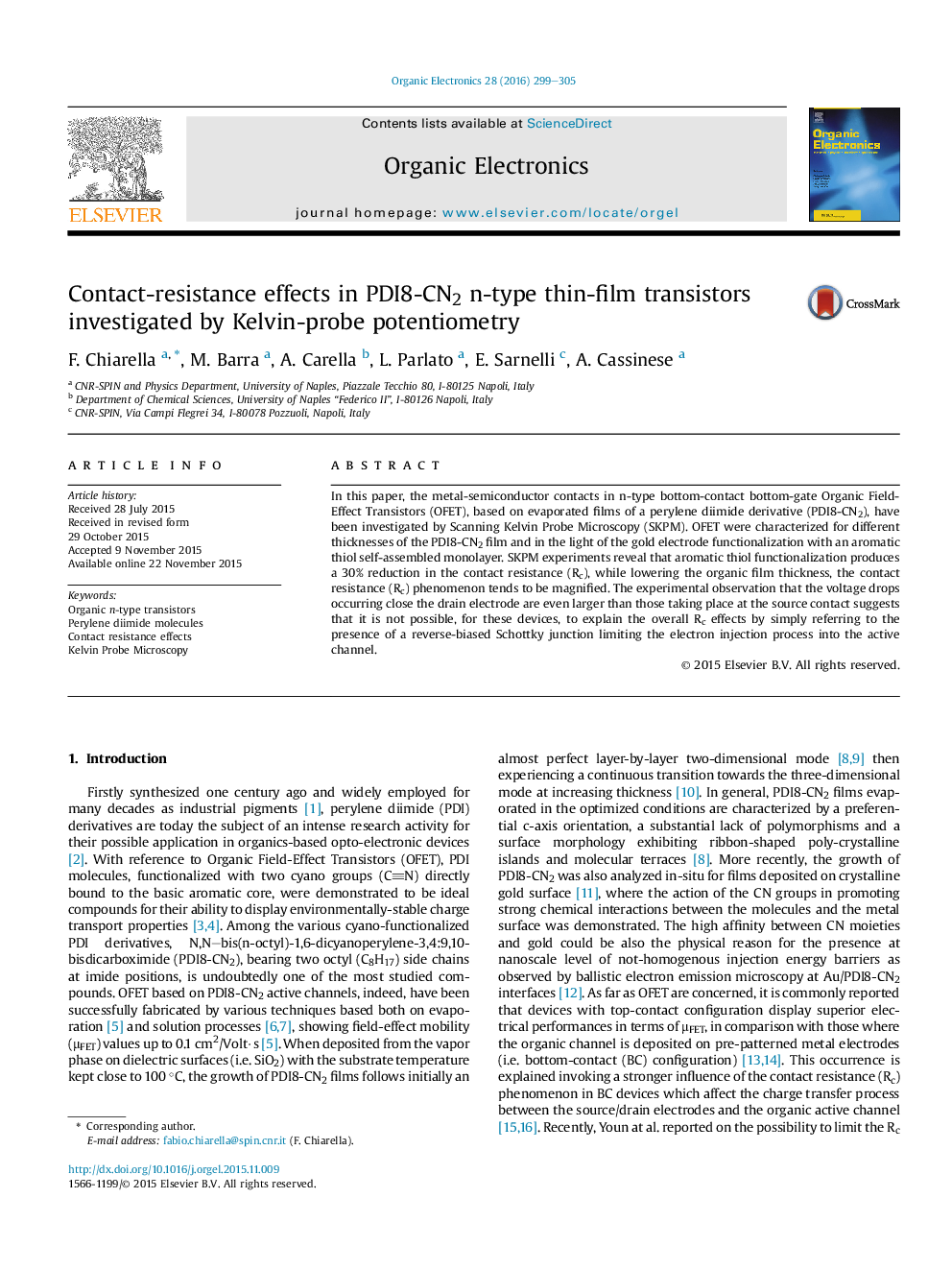| Article ID | Journal | Published Year | Pages | File Type |
|---|---|---|---|---|
| 1267149 | Organic Electronics | 2016 | 7 Pages |
•Contact resistances (Rc) in n-type OFET are evaluated by Kelvin Probe Microscopy.•Rc values are exponentially increasing when progressively reduced VDS is applied.•The voltage drops taking place at the drain electrode give the major contribution to the Rc effect.•Contact resistance stem from a combination of morphological disorder and energy level alignment.
In this paper, the metal-semiconductor contacts in n-type bottom-contact bottom-gate Organic Field-Effect Transistors (OFET), based on evaporated films of a perylene diimide derivative (PDI8-CN2), have been investigated by Scanning Kelvin Probe Microscopy (SKPM). OFET were characterized for different thicknesses of the PDI8-CN2 film and in the light of the gold electrode functionalization with an aromatic thiol self-assembled monolayer. SKPM experiments reveal that aromatic thiol functionalization produces a 30% reduction in the contact resistance (Rc), while lowering the organic film thickness, the contact resistance (Rc) phenomenon tends to be magnified. The experimental observation that the voltage drops occurring close the drain electrode are even larger than those taking place at the source contact suggests that it is not possible, for these devices, to explain the overall Rc effects by simply referring to the presence of a reverse-biased Schottky junction limiting the electron injection process into the active channel.
Graphical abstractFigure optionsDownload full-size imageDownload as PowerPoint slide
